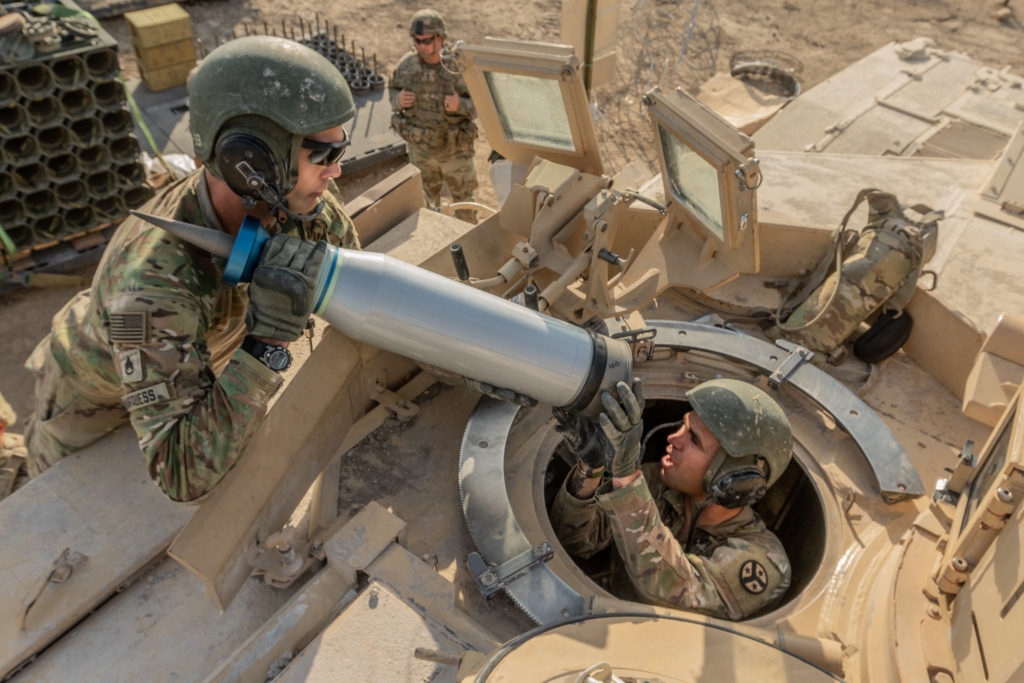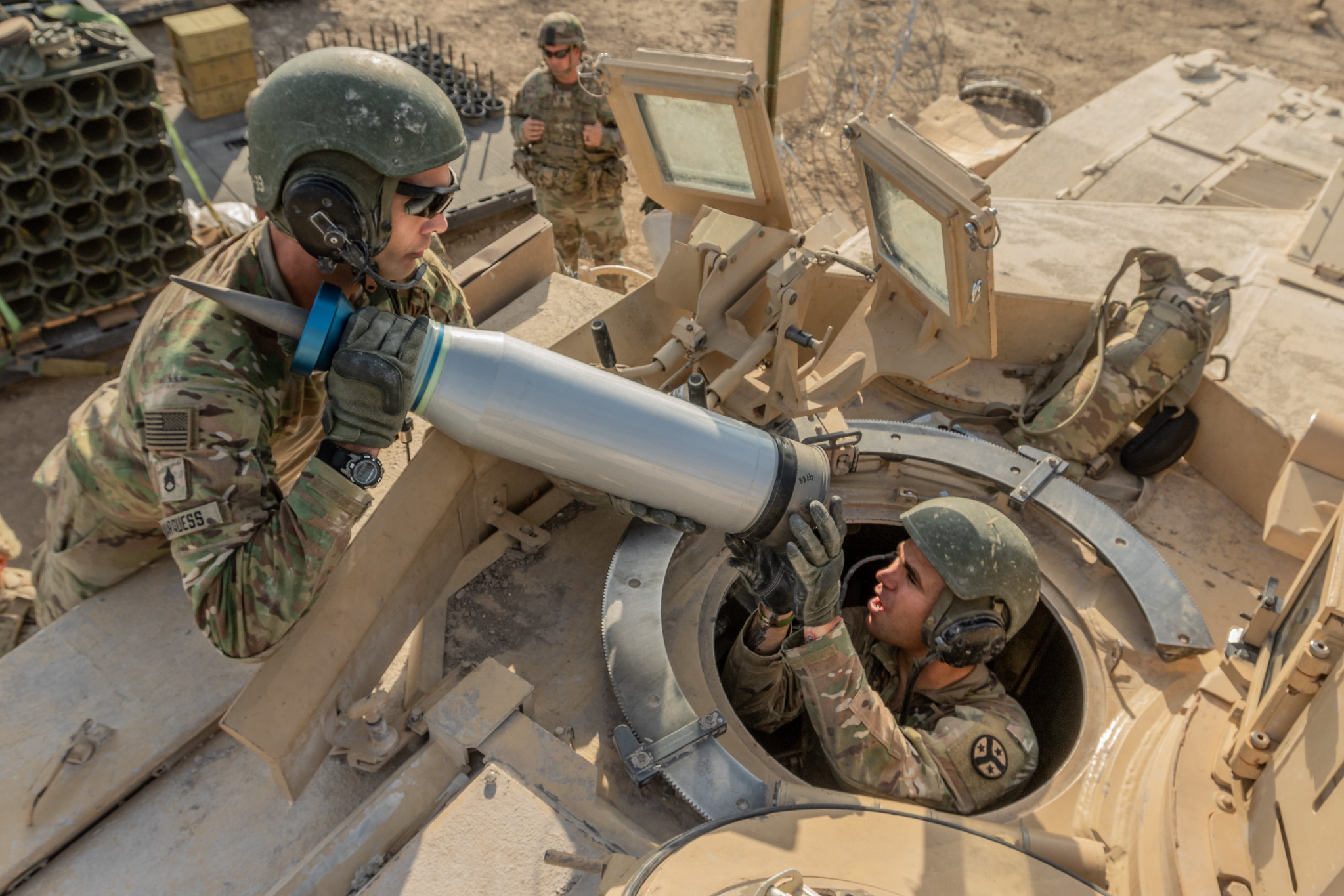

Topic Objective
Develop and demonstrate alternative extended range cannon artillery (ERCA) precision guidance mechanism utilizing the AN/TPQ-53 radar system resulting in increased firing accuracies and improved hit-to-kill performance. The AN/TPQ-53 was created by Lockheed Martin and detects, classifies, tracks and determines the location of enemy indirect fire in either 360- or 90-degree modes.
Description
With the emergence of extended range cannon artillery (ERCA), the Army is interested in enhancing its ground-based CTA radar systems with the ability to better support the Long-Range Precision Fires (LRPF) mission. The main purpose of this effort is to investigate, develop, and demonstrate concepts/algorithms to improve accuracies for the AN/TPQ-53 system in order to provide precision guidance. Significantly improving the Target Location Accuracy for command guidance is a high Army priority.
Effective deployment of these advanced concepts/algorithms may serve to enhance the performance of current and future Army CTA radar systems, such as the AN/TPQ-53 to support the LRPF mission. This Programs of Record is funded annually for modernization efforts, commonly referred to as Modernization Development Efforts (MDE), which provide a conduit for the integration of improved hardware and emerging software algorithms. This includes initial design and development efforts, laboratory design, productization into the software baseline, and field-testing.
Phase I
Identify concepts that could be utilized to improve accuracies for the AN/TPQ-53 DDREX in order to provide precision guidance. Candidate concepts could consist of multi-sensor, software or hardware concepts to improve accuracies in support of precision guidance. Special consideration should be given to size, power consumption, cost, complexity of the proposed concept; accuracy improvements associated with proposed concept; and modeling/simulation on viability of proposed concepts. At end of Phase I, prepare and present a study report to: (1) identify concepts that improve accuracies to support precision guidance, (2) identify size, power consumption, speed, and complexity of selected modes/algorithms, (3) provide modeling/simulation results, and (4) demonstration plan for Phase II.
Phase II
Develop and demonstrate accuracy improvements to support precision guidance utilizing high fidelity modeling and simulation, collected AN/TPQ-53 data and/or a surrogate prototype radar system.
Phase III
Productization of improvements into the software baseline: provide analysis, design updates, implementation support, and systems engineering testing for proposed algorithmic updates developed under Phase I and demonstrated in Phase II. Additionally, update the software and firmware to accommodate the final design and provide the following: software source code and executable files, system/subsystem specification updates, and performance specification document updates. Lastly, prepare lab tests, engineering test plans, and procedures to demonstrate the performance of the algorithms during a test event.
Submission Information
To submit full proposal packages, and for more information, visit the DSIP Portal.

References:
E. William, J. Vesecky, and K. Pister. Agile Multi-Function Arrays. Defense Technical Information Center, 2007. Stutzman, Warren L., and Thiele, Gary A. Antenna Theory and Design 3rd edition. John Wiley & Sons, 2012. Skolnik, Merrill. Radar Handbook 3rd Edition. McGraw Hill, 2008.
Topic Objective
Develop and demonstrate alternative extended range cannon artillery (ERCA) precision guidance mechanism utilizing the AN/TPQ-53 radar system resulting in increased firing accuracies and improved hit-to-kill performance. The AN/TPQ-53 was created by Lockheed Martin and detects, classifies, tracks and determines the location of enemy indirect fire in either 360- or 90-degree modes.
Description
With the emergence of extended range cannon artillery (ERCA), the Army is interested in enhancing its ground-based CTA radar systems with the ability to better support the Long-Range Precision Fires (LRPF) mission. The main purpose of this effort is to investigate, develop, and demonstrate concepts/algorithms to improve accuracies for the AN/TPQ-53 system in order to provide precision guidance. Significantly improving the Target Location Accuracy for command guidance is a high Army priority.
Effective deployment of these advanced concepts/algorithms may serve to enhance the performance of current and future Army CTA radar systems, such as the AN/TPQ-53 to support the LRPF mission. This Programs of Record is funded annually for modernization efforts, commonly referred to as Modernization Development Efforts (MDE), which provide a conduit for the integration of improved hardware and emerging software algorithms. This includes initial design and development efforts, laboratory design, productization into the software baseline, and field-testing.
Phase I
Identify concepts that could be utilized to improve accuracies for the AN/TPQ-53 DDREX in order to provide precision guidance. Candidate concepts could consist of multi-sensor, software or hardware concepts to improve accuracies in support of precision guidance. Special consideration should be given to size, power consumption, cost, complexity of the proposed concept; accuracy improvements associated with proposed concept; and modeling/simulation on viability of proposed concepts. At end of Phase I, prepare and present a study report to: (1) identify concepts that improve accuracies to support precision guidance, (2) identify size, power consumption, speed, and complexity of selected modes/algorithms, (3) provide modeling/simulation results, and (4) demonstration plan for Phase II.
Phase II
Develop and demonstrate accuracy improvements to support precision guidance utilizing high fidelity modeling and simulation, collected AN/TPQ-53 data and/or a surrogate prototype radar system.
Phase III
Productization of improvements into the software baseline: provide analysis, design updates, implementation support, and systems engineering testing for proposed algorithmic updates developed under Phase I and demonstrated in Phase II. Additionally, update the software and firmware to accommodate the final design and provide the following: software source code and executable files, system/subsystem specification updates, and performance specification document updates. Lastly, prepare lab tests, engineering test plans, and procedures to demonstrate the performance of the algorithms during a test event.
Submission Information
To submit full proposal packages, and for more information, visit the DSIP Portal.
References:
E. William, J. Vesecky, and K. Pister. Agile Multi-Function Arrays. Defense Technical Information Center, 2007. Stutzman, Warren L., and Thiele, Gary A. Antenna Theory and Design 3rd edition. John Wiley & Sons, 2012. Skolnik, Merrill. Radar Handbook 3rd Edition. McGraw Hill, 2008.
